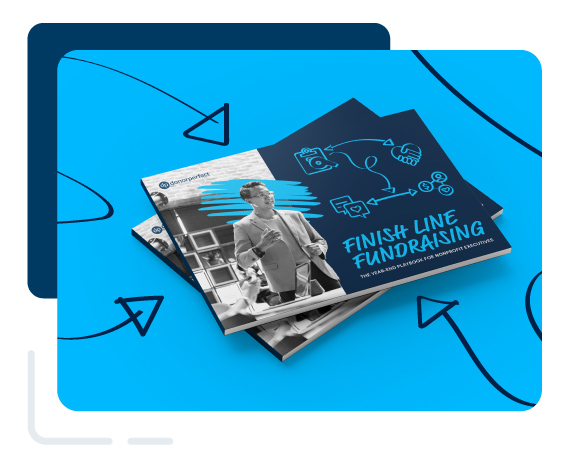Nonprofit Technology & Fundraising Blog
Subscribe to our mailing list

November 19, 2025 | Year End
Contributed by Mallory Erickson, nonprofit speaker, author, podcast host, and creator of Practivated, the practice space for fundraisers
Have you ever sat down at your desk during year-end fundraising season and thought: “I should know what to do… so why does everything feel so unclear?” If so, you’re not alone—and more importantly, there’s nothing wrong with you.
That mental clutter? That freeze before making an ask? That shame spiral after a donor doesn’t respond? It’s not a sign that you’re a bad fundraiser. It’s a sign that you’re human. And that you’re navigating one of the most emotionally complex roles in the nonprofit sector.
Let’s discuss why fundraisers tend to freeze up during the year-end season and how to remove your internal barriers to success.
When I ask fundraisers to imagine being pulled on stage with 10 seconds’ notice to pitch their mission, most say they would panic. Not because they don’t know their organization, but because their nervous system gets hijacked by fear.
That fear response is actually your brain doing its job. The amygdala (your brain’s threat detector) can’t tell the difference between being chased by a bear in the woods or making an ask to your biggest donor.
When activated, it shuts down your ability to connect, be creative, and show up in alignment—all critical to effective fundraising. And chronic stress keeps you stuck in this pattern, leading to burnout, disconnection, and a scattered to-do list you can never quite tackle.
You already know what to do. Let’s clear the path so you can do it!
DonorPerfect experts created Finish Line Fundraising: The Year-End Playbook to help nonprofit executives and development directors delegate tasks, cross off to-do lists, and lead their team across the finish line with confidence.

Most fundraisers think the problem is strategy. But what I’ve seen after coaching more than 80,000 fundraisers and analyzing donor meetings inside my AI simulation platform, Practivated, is this: many of the biggest barriers to fundraising success are internal.
These internal blocks show up in a few primary thought patterns that I call the GAILs—gremlins, assumptions, limiting beliefs, and interpretations.
The GAILs form an invisible barrier that holds us back from the bold, aligned action we already know how to take:
Templates are great. But if we’re sitting on five email drafts and still not hitting send, the answer isn’t another script.
This is a sign that we need to address the fear under the surface. And before you argue that fear or stress aren’t the reason you haven’t sent the email, I want to make sure we talk about something: fear is really sneaky.
All of these reasons sound and feel legitimate, but they are actually disconnecting us from our donors. And from ourselves.
Connection takes courage. It asks us to risk discomfort, to lean into vulnerability. That’s the heartbeat of this work—and no template can do that for us.
Imagine entering the year-end season not from a place of panic, but from clarity. Imagine approaching donors not as people to be convinced, but as potential partners aligned in purpose. Imagine making asks not because you’re supposed to, but because you genuinely believe the work deserves it. That’s what Alignment Fundraising offers. And it starts by coming back into alignment with yourself. Here’s how.
As you gear up for your year-end campaign, here are three clarity-building steps you can take today:
You don’t need to push harder to raise more money this year-end. You need to clear the noise that keeps you from taking bold, aligned action. Because when you’re connected to your clarity, your donors will feel it. And that’s when fundraising becomes not just easier, but transformational.
Want more tools to practice aligned fundraising? Discover Practivated—where fundraisers practice donor conversations in a risk-free environment. If you’re a DonorPerfect customer and interested in a free trial of Practivated, jump in here!
Lead your team across the finish line with confidence
Follow us on social!